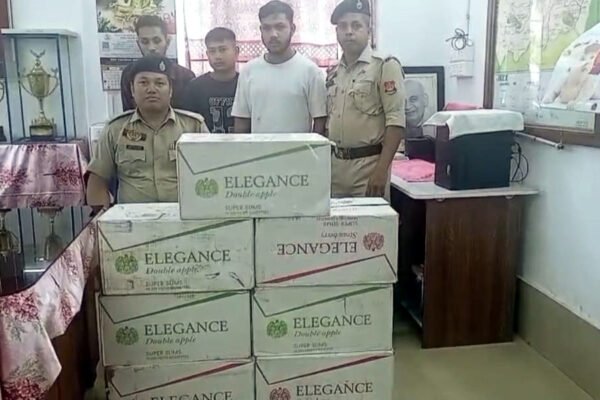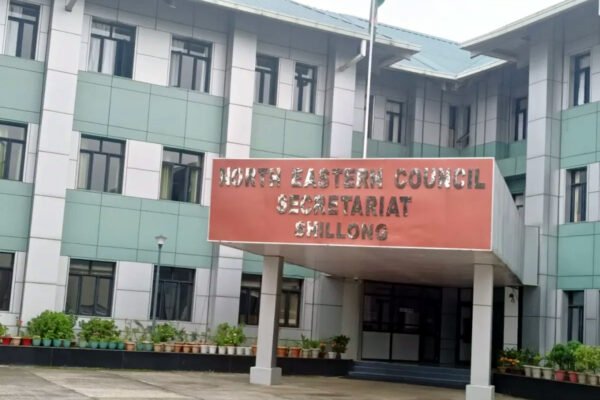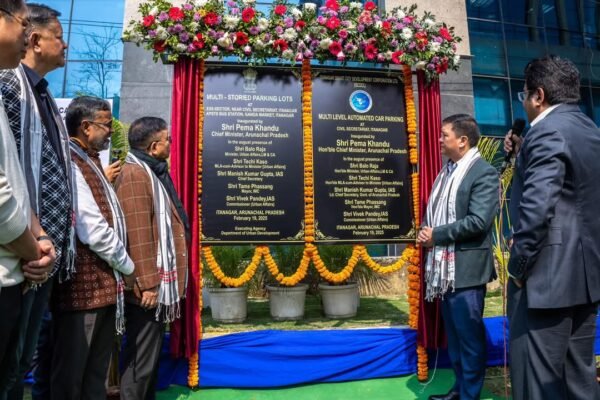- NET Web Desk
India’s freedom struggle witnessed mass participation of women on an unprecedented scale, but unfortunately, several of them remained invisible, unknown and unsung in the heap of our history textbooks.
These courageous queens stepped forward and took control of the movement, thereby placing their names into the history for their unwavering and selfless devotion to serving the nation.
On this auspicious occasion of India’s 75th years of Independence, let’s have a look at some of these courageous women freedom fighters from Northeast India, who inspired and contributed immensely to shape Independent India.
KANAKLATA BARUAH :
Kanaklata Barua was born in Barangabari, Assam in 1924. She is one of the youngest martyrs of the Quit India Movement. On 20 September 1942 17-year-old Barua joined a group of freedom fighters and marched towards Gohpur Police station to unfurl the Tricolour in support of the Quit India Movement.
Police at the station opened indiscriminate firing on the group to prevent them from committing such daring act. Kanaklata Barua was martyred with a Tricolour furling in her hands.
TILESWARI BARUAH :

The only daughter of Bhabakanta Barua – a marginal peasant of village Nij Bargaon under Assam’s Dhekiajuli police station, Tileswari Baruah was so much influenced by the patriotic songs composed by Jyotiprasad Agarwala, that she voluntarily joined the procession that local Congress leaders had organized to hoist the Tricolor atop the local police station on September 20, 1942.
Carrying a small flag in her hand, Tileswari was in the crowd which had entered the police station compound.
Tileswari was behind Monbor Nath, who headed the local ‘Mrityu Vahini’ group. When Nath defied orders of the police officer and climbed atop the police station, he was gunned-down within a few seconds. Other volunteers followed, one by one. Tileswari was the fourth to be hit by the bullet after Nath, Kumoli Devi and Mohiram Koch.
CHANDRAPRAVA SAIKIANI :

Chandraprava Saikiani was a freedom fighter, activist, writer, and social reformer from Assam. Considered to be the pioneer of the feminist movement in Assam; Saikiani was the founder of The All Assan Pradeshik Mahila Samiti – a non-governmental organization working for the welfare of the women of Assam.
She made a clarion-call against child marriage, polygamy and the discrimination of women at the temples and to take up issues like women’s education and self-employment.
During her stay at Tezpur, she associated with luminaries like Jyotiprasad Agarwala, Omeo Kumar Das, and Chandranath Sarma. In 1918, at the Tezpur session of Asom Chhatra Sanmilan, she was the only female delegate and addressed a huge throng on the harmful effects of opium eating and asked for its ban. It was the first event where an Assamese woman spoke in front of a large gathering.
Inspired by the rise of nationalism in 1921, she joined the non-co-operation movement of Mahatma Gandhi and worked to spread the message among women of Tezpur.
DARIKI DASI BARUAH :
Baruah was actively involved in the Civil Disobedience Movement. Considered as one of the leading members of the anti-opium campaign, she was arrested on February 1, 1932, and was jailed for six months for anti-opium picketing. She was pregnant at the time of imprisonment, but refused to take conditional release from jail. Eventually, she fell sick and died in the prison on April 26, 1932.
NALINIBALA DEVI :

Born on Mar 23, 1989, Nalinibala Devi was a daughter of the prominent freedom fighter from Assam and writer – Nabin Chandra Bardoloi, who actively participated in the Non-cooperation movement led by Gandhi. A revered figure in the Assamese literature circuit, Nalinibala Devi started writing poems which were fuelled by patriotic emotions.
Nalinibala was one of the few women who came forward to support Gandhi in the Non-cooperation and the Swadeshi movement in Assam.
Hemanta Kumari Devi, Guneswari Devi, and Nalinibala together opened a weaving training centre in Guwahati to increase the production of Khadi.
A number of women, influenced by the revolutionaries who were trying to use Khadi as a weapon against the British, stunned everyone when they stitched 500 khadi caps for Congress workers during the visit of Gandhi.
AMAL PRABHA DEVI :
Amal Prabha Das was born on November 12, 1911, to Hare Krishna Das and Hema Prabha Das in Dibrugarh, Assam.
In 1934, Amal Prabha attained the opportunity to interact with Mahatma Gandhi, who stayed at her house during his visit to Guwahati. The meeting influenced her greatly and motivated her to work for the welfare of the society.
Amal Prabha along with her mother visited the Maganbari Centre of Self Development at Wardha in 1939 to learn about the village reform activities. The family soon set up indigenous industries on their land in the Sarania Hills and began training the local people in small-scale industries and handicraft work.
REBATI LAHON :
Born in Teok, Rebati Lahon was a key figure and one of the core members of the Quit India Movement. In 1942, she was imprisoned and owing to the cramped living conditions in prison, she suffered from pneumonia. She passed away, after been released from jail.
LALNU ROPUILIANI :

Lalnu Ropuiliani was one of the bravest souls in Mizoram who opposed British aggression. She was the front-runner in the movement which was also joined by hundreds of women. They were determined not to allow them to make inroads in their lands by the British. She died on January 3, 1895 in Chittagong jail.
RANI GAIDINLIU :

Born on January 26, 1915 at Luangkao Village now in Taosem Sub-Division under Tamenglong District of Manipur state, Rani Gaidinliu – the Naga spiritual and political leader, led an armed uprising against the British in Manipur, Nagaland and Assam.
Rani Gaidinliu at the age of 13 associated with Jadonang and became his lieutenant in throughout his social, religious and political movements. Gaidinliu, along with her cousin Haipou Jadonang joined the Heraka movement, which aimed at revival of the Naga tribal religion and establishing self-rule of the Nagas (Naga Raj) ending the British rule.
Its pertinent to note that Haipou Jadonang was a spiritual and political Rongmei Naga leader from Manipur who fought for freedom from the clutches of the British colonial rule. After Jadonang, Gaidinliu took up the leadership of this movement, and valiantly fought against the British.
Gaidinliu commenced a serious revolt against the British after the martyrdom of Jadonang, which led to her imprisonment by the Britishers for 14 years. Finally released in 1947, her role in the struggle against Britishers was highly acknowledged, which led to her introduction as “Rani”.
Released from Tura Jail after India attained Independence, the renowned freedom fighter passed away on February 17, 1993 at her native village Luangkao.
She was conferred with the Tamrapatra in 1972, Padma Bhushan in 1982, Vivekananda Sewa Summan in 1983, Stree Shakti Purashkar in 1991 and Bhagwan Birsa Munda Puraskar in 1996 posthumously. However, the Government of India (GoI) on 1996 also issued a Commemorative Stamp of Rani Gaidinliu.
KA PHAN NONGLAIT :

‘Ka Phan Nonglait’ – a freedom warrior from the Khasi Hills of Meghalaya bravely assisted ‘U Tirot Sing Syiem’, who drew his lineage from the Syiemlieh clan and declared war and fought against British for attempts to take over control of the Khasi Hills.
When the British soldiers started to move out of Moirang Village and headed for Nongkhlaw, soldiers of Tirot Singh set a trap for the British soldiers at Langstiehrim.
Due to the heat, British soldiers rested near a waterfall. While, brave Phan Nonglait made the soldiers of Tirot Sing wait in the shadows. She provided the British soldiers who rested at the waterfall with drinks, took away all their weapons to throw under the rock hole of the waterfall; and later the soldiers of U Tirot Sing captured the British soldiers easily.
BHOGESWARI PHUAKANII :
She is one of the prominent martyrs of August Kranti (Quit India Movement) from Nagaon District of Assam. She was shot dead during non-violent protest marches against British rule.










